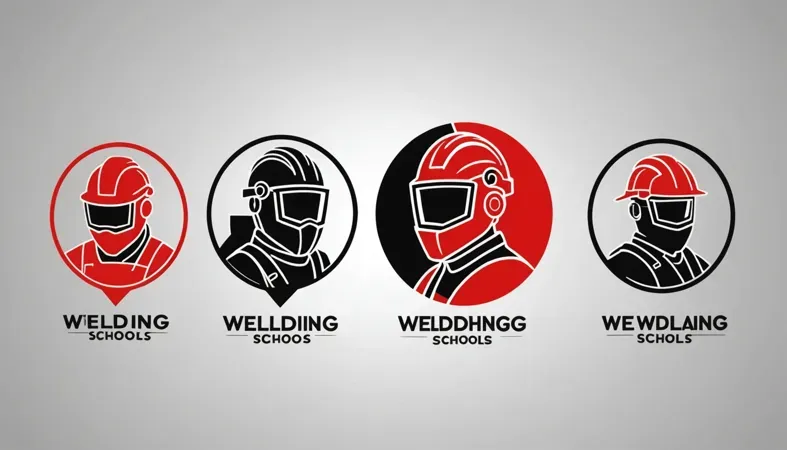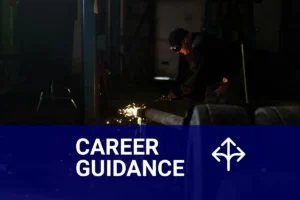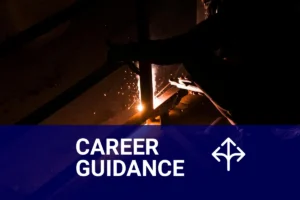How Long is Welding School? – Duration, Types, Programs
Published on: April 6, 2025 | Last modified: March 4, 2025
By: Joe Carter
Welding school is where you learn the skills needed to become a welder. You’ll get hands-on training and classroom instruction.
It’s a question I’ve heard often: how long is welding school? Knowing the duration is key for planning your career. From my experience, understanding the timeline can help you fit school into your life and future job opportunities.
In this guide, we’ll explore types of welding schools, prerequisites for enrollment, steps to enroll, precautions to take, and the various programs available. We’ll also discuss factors affecting the duration of welding school, common issues students face, and tips for aftercare and advanced techniques. Plus, we’ll highlight the advantages of attending welding school and look at applications across different fields, alternatives that might work better, and address FAQs about how long does welding school take.
Contents
- How Long is Welding School?
- What is Welding School?
- Types Of Welding Schools
- Prerequisites
- Precautions
- Steps for Enrolling in Welding School
- Types Of Programs in Welding School
- Factors Affecting the Duration Of Welding School
- Additional Time Considerations for Welding School
- Typical Issues for Students in Welding School
- Why This is Worth It: Advantages Of Welding School
- Applications Across Different Fields
- Alternatives That Might Work Better
- Frequently Asked Questions (FAQs)
- Conclusion
- Additional Reading
How Long is Welding School?
Welding school teaches you essential welding skills. So, how long is welding school? Programs typically last 6 months to 2 years, depending on depth and focus. It’s challenging but prepares you for various welding jobs.
What is Welding School?
Welding school is an educational institution focused on teaching welding techniques and skills. These programs typically combine hands-on training with classroom instruction. Most welding schools offer programs lasting from 3 to 18 months. According to the American Welding Society, over 500 accredited welding schools operate in the U.
S., training thousands of students each year.
How long is welding school? It varies based on the program type and length—many students complete a welding certificate in about 6 months or less. In my experience, a full welding degree takes about 2 years. This timeframe includes welding classes and practical lab sessions for hands-on experience.
I’ve seen many people benefit from it for shaping their careers. One student I know completed a welding program in Texas in just 9 months. It’s a solid opportunity if you’re curious about welding program duration; you’ll likely finish training quickly and find a job sooner than expected. You’ll effortlessly gain the skills you need, whether in Florida or elsewhere!
Types Of Welding Schools
What are the types of welding schools and their programs?
Technical Colleges
Technical colleges offer hands-on training focused on specific welding techniques. These programs usually take 6 to 12 months to complete. You’ll engage in classroom instruction and practical lab work, gaining real-world experience.
Trade Schools
Trade schools prepare you for specific trades, including welding. Programs typically last 9 months to 2 years. You’ll attend lectures, participate in lab sessions, and develop essential on-site skills.
Community Colleges
Community colleges offer broader education with welding certification options. Programs usually last 1 to 2 years. To graduate, you’ll balance general education courses with technical welding classes and hands-on practice.
Online Welding Programs
Online welding programs provide flexible learning but require hands-on work at home or local facilities. Programs may last 3 months to 1 year. You’ll study welding theory online and complete practical skills through supervised sessions.
Apprenticeship Programs
Apprenticeships combine on-the-job training with classroom instruction, lasting about 3 to 5 years. As an apprentice, you’ll work under experienced welders while taking classes to enhance your skills, allowing you to earn while you learn.
We covered various types of welding schools and their offerings here. Next, we will discuss the prerequisites for enrollment.

Prerequisites
What do you need to get started at welding school?
- Welding Machine: You need a welder, like the Lincoln Electric Easy MIG 180. It’s essential for learning MIG (Metal Inert Gas) welding techniques.
- Welding Helmet: A high-quality helmet, such as the Auto-Darkening Miller Digital Infinity, is needed for eye protection while learning to weld.
- Welding Filler Rods: You should have ER70S-6 rods, like Lincoln Electric ER70S-6, for steel welding practice; they’re standard for most projects.
- Work Table: Use a sturdy workbench with a minimum size of 1.2 m x 0.6 m (4 Ft X 2 Ft) to keep your equipment organized during class.
- Welding Safety Equipment: A fire-resistant jacket, like the Revco BSX, is crucial; it protects against sparks and heat while you train.
We have now covered the necessary prerequisites. Next, we will examine important precautions to consider.
Precautions
Let’s review essential safety measures for welding schools.
- Personal Protective Equipment: Always wear a welding helmet to shield against sparks. Products like the 3M Speedglas offer excellent visibility.
- Ventilation: Ensure adequate air circulation to avoid inhaling fumes. Use fume extractors like the FEIN Turbo II for effective removal.
- Grounding Equipment: Check your equipment’s grounding to prevent electric shock. Invest in a proper grounding clamp for safety.
- Fire Safeguards: Keep flammable materials away from the welding area. Use flame-resistant blankets like the Diamondtech heat blanket for protection.
I’ve always believed that safety isn’t just a rule; it’s about your well-being.
That covers necessary precautions for welding. Let’s now take a look at the steps for enrolling in welding school.
Steps for Enrolling in Welding School
Now, we’ll cover the steps for how long welding school lasts and what you need to do.
Research Welding Schools
Start by exploring various welding schools. Programs typically range from six months to two years. Compare factors like course length, curriculum, and certification options. Schools in Texas may offer different structures than those in Florida.
Check student reviews for insights on course experiences. It’s important to know if you’ll receive job placement support after graduation. Focus on schools with high job placement rates—this can significantly impact your career.
Visit Schools In-person
Schedule visits to your chosen schools. Spending time on campus gives you a sense of the environment. Examine the facilities, tools, and equipment you’ll use. Engaging with instructors and current students can provide valuable insights about the programs offered.
Ask about the practical training aspect of the program. Many schools promise hands-on experience, which is crucial in welding. Look for programs that emphasize time in lab settings, as this is where you’ll develop necessary skills.
Mastering techniques such as welding uphill effectively is often best accomplished with hands-on practice and guidance.
Apply to Multiple Programs
Apply to several welding programs to keep your options open. Applications often require high school transcripts and details about your background. Each application takes time, so allow yourself a few weeks to complete them. Aspiring welders should also be aware of common issues like spatter, which can be understood by exploring what causes weld spatter.
Check deadlines, as they can vary by school. Some programs have rolling admissions, while others may have fixed dates. Focus on schools that align with your career goals. Even if you don’t get into your top-choice school, there are many other excellent options.
Accept an Offer
Once you get accepted, it’s time to decide. Consider factors like distance, tuition, and program length—most welding courses last from a few months up to two years. If finances are tight, look for grants or scholarships. Ensuring you can afford school will set you up for success. Researching specific techniques can be beneficial, and you can learn more about welding vertical surfaces as part of your technical skill development.
Contact the school to confirm your enrollment and any additional details. You may need to submit a deposit to secure your spot. It’s exciting to start this new chapter, so choose a program that feels right for you!
Enroll and Begin Classes
Complete the enrollment steps provided by the school. This may involve orientation and setting up your class schedule. Classes are typically structured, so familiarize yourself with the syllabus. Know about any required materials or textbooks early on.
This is the point where your commitment pays off. Dive into your welding classes and connect with your classmates. The skills you develop during this time can set the foundation for a successful career in welding. Collaboration and support can enhance your learning experience significantly, paving the way for those who are serious about pursuing a welding career. Let’s get you welding!
We have now covered the process of enrolling in welding school. Next, we will examine the different types of welding programs.
Types Of Programs in Welding School
Let’s explore the different types of welding programs, including MIG, TIG, Stick, Flux-Cored Arc Welding, and Welding Inspection Programs.
MIG Welding Courses
MIG welding (Metal Inert Gas Welding) is a popular choice for beginners. These courses usually last 4 to 12 weeks and focus on equipment setup, wire feeding, and creating strong welds. You’ll often see MIG used in automotive repairs and metal fabrication.
TIG Welding Courses
TIG welding (Tungsten Inert Gas Welding) is known for its precision. It generally takes 10 to 24 weeks to complete a course. You’ll master controlling heat and adding filler metal, making it ideal for thin materials.
Stick Welding Courses
Stick welding (Shielded Metal Arc Welding – SMAW) is simple and versatile. The courses typically last 6 to 14 weeks. It’s perfect for outdoor jobs and various environments, but it requires consistent practice for strong, clean welds.
Flux-cored Arc Welding Courses
Flux-Cored Arc Welding (FCAW) courses offer a unique approach. They usually last 8 to 20 weeks. You’ll learn to use a continuous tubular wire filled with flux, which is excellent for thick metals and faster welding.
Welding Inspection Programs
Welding inspection programs provide critical knowledge in quality control. These courses may take 6 to 12 months to complete. You’ll learn to assess weld quality, understand codes, and ensure safety standards in various welding processes.
Factors Affecting the Duration Of Welding School
What factors influence the length of your welding education experience?
Program Length
The typical welding program lasts from 6 months (24 Weeks) to 2 years. Shorter programs focus on specific skills, while longer ones cover broader topics, including advanced welding techniques.
Course Load
The amount of coursework each semester affects your timeline. Full-time students can finish faster, taking 12-15 credits, while part-time students may only manage 6-9 credits, extending their education over several years.
Student Commitment
I recommend keeping up with your studies each week. Those who dedicate 15-20 hours weekly to practical reviews gain proficiency quicker and finish faster in their welding program.
Location Of the School
Geographical differences can play a role. Schools in urban areas often have shorter wait times for classes, while rural programs may offer fewer courses, increasing your duration.
Instructor Availability
Instructor experience and availability can impact the speed of learning. More instructors lead to smaller class sizes, providing personal feedback and enabling quicker progression through welding skills and certifications.
Additional Time Considerations for Welding School
Wondering what else can affect your time in welding school? Here are some key aspects to consider.
| Factor | Description | Impact on Duration |
|---|---|---|
| Part-Time vs. Full-Time | Part-time students take fewer courses. It can extend your time in school significantly. | 1-2 years longer for graduates. |
| Skill Level | Students with prior experience may accelerate through basic courses. | Potentially reduces time by 6-12 months. |
| Specialization Choices | Programs focusing on advanced techniques like underwater welding require additional training. | Can extend training by 6-18 months. |
| Work-Study Opportunities | Holding a job in the field can provide flexible skills application but may slow school progress. | Varies, but often adds 6 months or more. |
| Residency Requirements | Some programs may require residency in certain states, impacting enrollment decisions. | Can delay enrollment by 1-3 months. |
Typical Issues for Students in Welding School
Let’s look at the unique challenges you may face in welding school.
Time Management Challenges
Welding school has strict schedules. Students often struggle to meet deadlines. If assignments pile up, create a weekly planner to allocate time for tasks.
Access to Resources
Welding school may lack sufficient tools. If you can’t find what you need, ask instructors for alternatives. They can guide you to local suppliers or provide shared tools.
Adjusting to Hands-on Learning
Hands-on skills are critical in welding school. It can be tough if you’re more comfortable with books. Identify weak practical skills during practice. Seek feedback from peers or ask your instructor for extra sessions.
Understanding Safety Protocols
Welding school emphasizes safety. Failing to follow safety protocols can lead to hazards. If safety signs and guidelines confuse you, review them thoroughly and ask for clarification when needed.
Financial Constraints
Welding school can be expensive. Equipment and materials cost money. If you’re facing financial hurdles, seek scholarships or ask about payment plans with the school. They often have options for students.
Why This is Worth It: Advantages Of Welding School
The main benefit of welding school is that it opens doors to a high-demand career. I’ve seen people use it for better job opportunities and increased earning potential.
Moreover, you gain hands-on experience that rivals on-the-job training, learn from skilled instructors, and access industry connections. You also build a solid foundation in safety practices and welding techniques that set you apart in the field.
Applications Across Different Fields
I know people who’ve attended welding school for various careers. Here are some specific applications of welding:
- Manufacturing: It’s common for constructing metal parts for machinery and vehicles. Welding training enhances precision and quality. The manufacturing sector offers many job openings.
- Shipbuilding: Welders work on structural components and pipelines. Complex geometry requires experienced welders. The global shipbuilding market is vast and needs skilled workers.
- Construction: Welders join beams and rebar in skyscrapers and bridges. Their expertise ensures strong, secure structures. Construction projects often require certified welding training.
- Aerospace: Precision welding joins parts in aircraft. With strict standards, tech-savvy welders are essential. The aerospace industry is highly innovative and continually needs specialized skills.

Alternatives That Might Work Better
There are several options out there if you’re looking to master welding without the commitment of welding school. Online courses, such as those from Udemy or Coursera, can be flexible and affordable. Some community centers even offer short, intensive classes that teach the basics in just a few weeks.
For hands-on practice, consider apprenticing with a local welder. This real-world experience trumps many classroom settings and gives you practical skills. Plus, you’ve got access to industry insights that books or online courses can’t match!
Frequently Asked Questions (FAQs)
Now let us look at some common questions I typically get asked about welding school.
How Long Does It Take to Learn Welding?
It takes about 6 months to 2 years to learn welding. The time depends on the program you choose and your commitment. Different programs offer varying hours; for instance, a technical school may require 900 hours (About 6 Months), while an associate’s degree may need 2 years of study.
Is Welding a Hard Career to Get Into?
No, welding isn’t hard to get into. It’s more about practice and skill development. Many welders start with basic training and learn through hands-on experience. Plus, the demand for skilled welders is high, giving you strong job prospects after training. A common challenge among beginners is achieving clear visibility while working, and you can explore ways to improve visibility to enhance your skills.
How Long Does Tulsa Welding School Last?
Tulsa Welding School lasts approximately 7 months. Their programs focus on hands-on practice and theory to prepare you for real-world welding situations. You’ll gain skills in MIG, TIG, and Stick welding, making it a robust choice for aspiring welders.
How Long Does It Take to Get a Welding Certificate in Texas?
In Texas, getting a welding certificate typically takes 6 to 12 months. The length varies based on the training program’s intensity and schedule. Many programs combine classroom instruction with practical work, giving you the skills needed for entry-level positions.
What Are the Job Prospects Like for Welders?
Job prospects for welders are quite strong. As of 2022, the U.
S. Bureau of Labor Statistics reported a median salary of $47,010 per year. With industry demand expected to grow by 3%, skilled welders often find stable employment in construction, manufacturing, and automotive sectors.
Conclusion
We’ve made it to the end, and I hope it was helpful. We covered several key items like the types of welding schools, prerequisites for enrolling, steps to take, precautions, program types, factors affecting duration, common student issues, and even aftercare tips. We also discussed the advantages of welding school and its applications across different fields.
So, how long is welding school? As we mentioned, programs range from a few months to about two years, depending on the specific course and school you choose. I hope these welding tips prove valuable to you as you make decisions about your future in welding, whether you’re looking at programs in Texas or Florida.
For further insights and resources, be sure to explore what What is Welding has to offer you.
Additional Reading
- Lincoln Electric. (2020). The Procedure Handbook of Arc Welding (15th ed.). Cleveland, OH: Lincoln Electric Company.
- Little, R. L. (1999). Welding and Welding Technology. New York, NY: McGraw-Hill Education.
Joe Carter is a retired welding professional with over 40 years of hands-on experience in the industry, spanning ship repair, structural welding, and even underwater projects. Joe is a master of MIG, TIG, and Stick welding. Passionate about mentoring the next generation of welders, Joe now shares his decades of expertise and practical insights to help others build rewarding careers in welding.
American Welding Society, Career Development, Education, MIG Welding, Vocational Training, Welding, Welding Programs, Welding Safety, Welding School, Welding Techniques







